





Gelatin
 Gelatin – a product widely known. Many hostesses use it in cookery. Such products as fruit jelly, jelly, and also aspic, various mushroom and meat snack are known to all.
Gelatin – a product widely known. Many hostesses use it in cookery. Such products as fruit jelly, jelly, and also aspic, various mushroom and meat snack are known to all.
Certainly, gelatin brings benefit for our organism considerable. Even in traditional medicine it is applied to treatment of some diseases. But because of the high caloric content of gelatin nutritionists do not recommend to be fond excessively of eating of products on its basis.
Description
Gelatin – mix of proteic matters of animal origin. Receive it from bones, cartilages, sinews, that is, from the products rich with collagen, by long boiling. Most often the source of gelatin is served by cattle and fishes. Edible gelatin, as a rule, has a light yellow shade, and the smell and taste at it is absent.
The word "gelatin" is translated from Latin as "stiffened". All can explain such name with the known properties of this product easily.
Most often on sale it is possible to see this product in the form of small kristallik or plates.
As a part of gelatin a large amount of proteins (about 85%) and collagen prevails. The main useful properties of gelatin also consist in these substances.
The engineer Peter Cooper in 1845 patented gelatin. Nevertheless, some more next decades the invention of the engineer did not enjoy popularity. People just could not understand what the advantage of gelatin consists in and as in general this product needs to be used. But soon other scientist, Pearl Waite, it was invented by jelly. Here from this point gelatin, at last, gained deserved popularity and began to be applied widely in cookery.
For today from it prepare a set of various tasty dishes. To prepare something on the basis of gelatin, it is necessary at first to allow to it to inflate in cold water, and dissolve it in warm liquid.
This product and in pharmaceutics found the application. It is added by production of candles and capsules. Also it is used by production of photographic paper and a film, often add it at production of cosmetics: shampoos, balms and masks.
Structure and caloric content of gelatin
The main component of a product is collagen. Except it as a part of gelatin there are many proteins, water, amino acids, fats, RR vitamin, ashes, carbohydrates, macro - and microelements, such as magnesium, potassium, sodium, iron and phosphorus.
As a part of gelatin there are two important amino acids: proline and hydroxyproline which very positively influence cartilages and connecting fabrics promote their development, preservation and recovery.
Gelatin caloric content on 100 g of a product makes 355 kcal, and nutrition value:
- Proteins – 87,2 g;
- Carbohydrates – 0,7 g;
- Fats – 0,4 g.
Advantage of gelatin
Gelatin is well acquired by an organism, does not cause increase in secretion of digestive glands therefore it is often included in structure of dietary food.
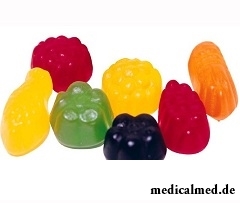 It is useful to use it at injuries of bones, for example at formation of cracks and changes as it promotes their bystry merging and quickly recovers tissues of joints after injuries. Regularly the people of old age having musculoskeletal system diseases, such as osteochondrosis and arthritis are recommended to use gelatin.
It is useful to use it at injuries of bones, for example at formation of cracks and changes as it promotes their bystry merging and quickly recovers tissues of joints after injuries. Regularly the people of old age having musculoskeletal system diseases, such as osteochondrosis and arthritis are recommended to use gelatin.
Useful properties of gelatin for hair and nails therefore it is often used as making for masks and trays were noted.
At internal bleedings recommend to accept jelly and mousses which part gelatin as it promotes coagulability of blood is.
The amino acids which are its part give to property gelatin, strengthening a cardiac muscle, promoting cerebration and strengthening immune system of an organism.
Harm of gelatin
Can apply gelatin and harm. With care it should be used to the people having cardiovascular diseases and to the people inclined to oksalurichesky diathesis. It is connected with the fact that gelatin is oksalogeny.
Gelatin has no other specific contraindications. In especially exceptional cases it can cause allergic reaction.
Statistically, on Mondays the risk of getting injured of a back increases by 25%, and risk of heart attack – for 33%. Be careful.

Scientists have no unambiguous opinion on a proximate cause of emergence of a carcinoma cutaneum today. Are precisely established only фа...
Section: Articles about health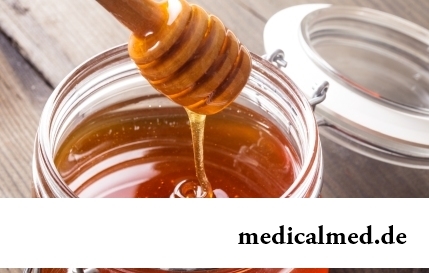
The trophic ulcer is not an independent disease. This heavy complication arising owing to a thermal injury (a burn or a frostbite), chronic pathologies of arteries or veins of the lower extremities, a diabetes mellitus, and also some defeats of a soyeda...
Section: Articles about health
People know that thermal sources have salutary force long ago. Treatment by natural waters is one of the most ancient methods of disposal of the most different diseases. Bathtubs, souls, wrappings and inhalations, in combination with water reception inside help to improve a condition of the patients suffering from disturbances of work of a musculoskeletal system, bodies of digestive tract, cardiovascular, nervous, respiratory and secretory system, skin and endocrine п...
Section: Articles about health
We present to yours the TOP of the medicamentous means exerting the stimulating impact on a potentiality, i.e. on ability of a muzhcha...
Section: Articles about health
No, probably, the person who would not have cold. Cold, cough, a headache – these symptoms are known to everyone. The peak of catarrhal diseases is the share of fall. SARS already came to schools and kindergartens, flu slowly makes the way to the cities, in a word, з...
Section: Articles about health
It is pleasant to state a possibility of improvement of quality of life of people with problems of functioning of secretory system. Efforts of talented inventors created products which will be able to provide normal life activity of clients with moderate degree of a disease, it is essential to facilitate the help to patients with strongly expressed disturbances....
Section: Articles about health
Water with a lemon - idle time in preparation drink which supporters of a healthy lifestyle already managed to appreciate. Upo...
Section: Articles about health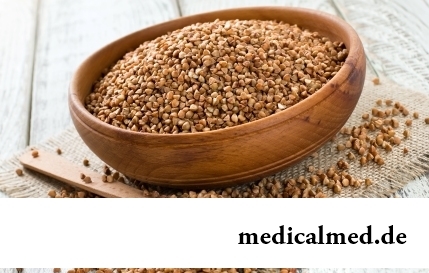
History of cultivation of a buckwheat contains more than five thousand years. Grain which is received from this plant is used for preparation of porridges, soups, baked puddings and puddings, do flour which is one of the main ingredients of the noodles popular in of it...
Section: Articles about health
Maternal milk is the best food for the newborn. It is the unique natural product containing an optimum set of nutrients, and which is best adapted in order that the baby normally developed and it was protected from harmful factors of external environment, unusual for it. Unfortunately, breastfeeding process not always does without complications. Sometimes, that the kid begins to bite a breast, giving to mother an essential inconvenience. Some women...
Section: Articles about health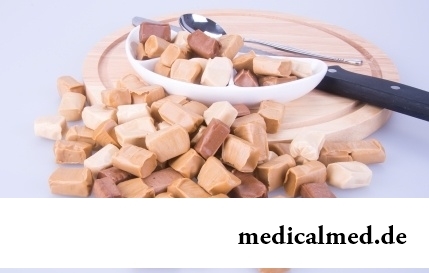
Food with the increased content of sugar is attractive to most of people - it is scientifically confirmed fact. Business here not in a nevozder...
Section: Articles about health
Nightmares belong to the most unpleasant frustration. Statistically, they happen at 4% of adults, and almost at 70% of children and teenagers. During a nightmare of people dreams himself in extremely difficult, life-threatening situation. It wakens suddenly, in...
Section: Articles about health
From sexual contacts each person can test insufficiently strongly expressed sexual desire or lack of satisfaction from time to time. However when it happens regularly, it is an occasion to think about health. Most of people does not hurry to ask similar questions physicians: one consider that they will be able to cope with malfunctions independently, others hesitate to report to strangers about so delicate problems and hope that troubles will stop by itself....
Section: Articles about health
Traveling all over the world, many try to try the most exotic dishes of national cuisines. Exists even so-called died away...
Section: Articles about health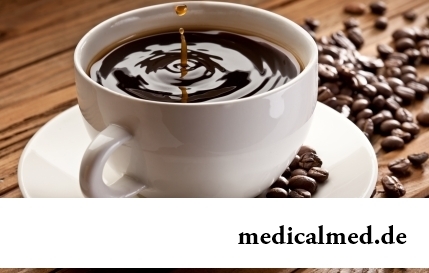
Coffee – favourite drink of many. For the last decades it more than once already declared very harmful, extremely useful and even necessary for normal life activity. In spite of the fact that this product became for us usual for a long time, exists much...
Section: Articles about health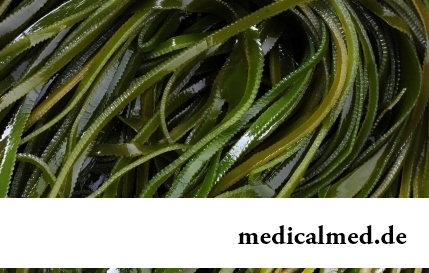
For residents of the countries of Southeast Asia various algas are an obligatory component of a daily diet. Their popularity is connected not only with high tastes, but also with numerous curative properties. Russians are a little familiar with products such that is distressing: algas are so useful that they should be eaten as often as possible. Let's get acquainted closer with useful properties of this seafood....
Section: Articles about health
Eyes – unique body on the structure thanks to which the person obtains about 80% of information on the world around: about a form...
Section: Articles about health
All like to sing. Small children with pleasure are engaged in a vocal, not especially thinking of hit in a melody. Adults most often hesitate, being afraid to show lack of talents in this area, and it is vain: singing is very useful for health....
Section: Articles about health
Epilepsy is one of widespread neurologic diseases. Parents, whose children suffer from this illness, should face rumors and delusions, many of which remained since the Middle Ages....
Section: Articles about health
History of use of an anesthesia during operations contains more than 160 years. Annually in the world hundreds of thousands surgical вм are carried out...
Section: Articles about health
The drugs stopping or oppressing life activity of pathogenic microorganisms are widely applied in clinical practice from 40th years of the last century. Originally antibiotics were called only substances natural (animal, vegetable or микробног...
Section: Articles about health
Cold, puffiness of a nose, itch, the watering eyes - characteristic symptoms of the allergic rhinitis resulting from hit of allergens (pollen, house dust, hair of animals, etc.) on a mucous membrane of a nose. Unpleasant feelings often give trouble, serving as the reason of a headache, an acrimony, sleep disorders, and in certain cases and the states close to a depression. How to get rid of undesirable satellites of a disease if near at hand there are no antiallergic...
Section: Articles about health
Each person has easy indispositions which he transfers "standing", trying not to ask for medical care. Argu...
Section: Articles about health
Partial and the more so full loss of hearing significantly reduces quality of life. Difficulties with communication lead to loneliness and isolation. The person who badly hears experiences difficulties with social and professional implementation, quite often has problems in...
Section: Articles about health
With age in a human body harmful substances collect. We receive them with food and water, at inhalation of the contaminated air, reception of medicines, use of household chemicals and cosmetics. A considerable part of toxins accumulates in a liver which main function is continuous purification of blood. This body begins to knock as any got littered filter, and efficiency of its work decreases....
Section: Articles about health
Life does not indulge the modern woman special emotional comfort and carelessness. Fatigue, troubles at work, misunderstanding...
Section: Articles about health
Aging — natural and inevitable process. Over time our skin loses elasticity, on it saggings are formed, the face form loses former clearness. The procedure of nitevy lifting (nitevy tightening) can successfully solve this problem. In order that it is better познако...
Section: Articles about health
On the head of the person about one million hair follicles, or as they are called still, hair bulbs are located. At the time of the birth most of them is in the "sleeping" state, but within several weeks follicles become more active, and from them hair begin to grow. Intensity of this process is individual, and during life it can change. Genetic predisposition, a physical and emotional state, aggressive influence affects the growth rate of hair out of...
Section: Articles about health
